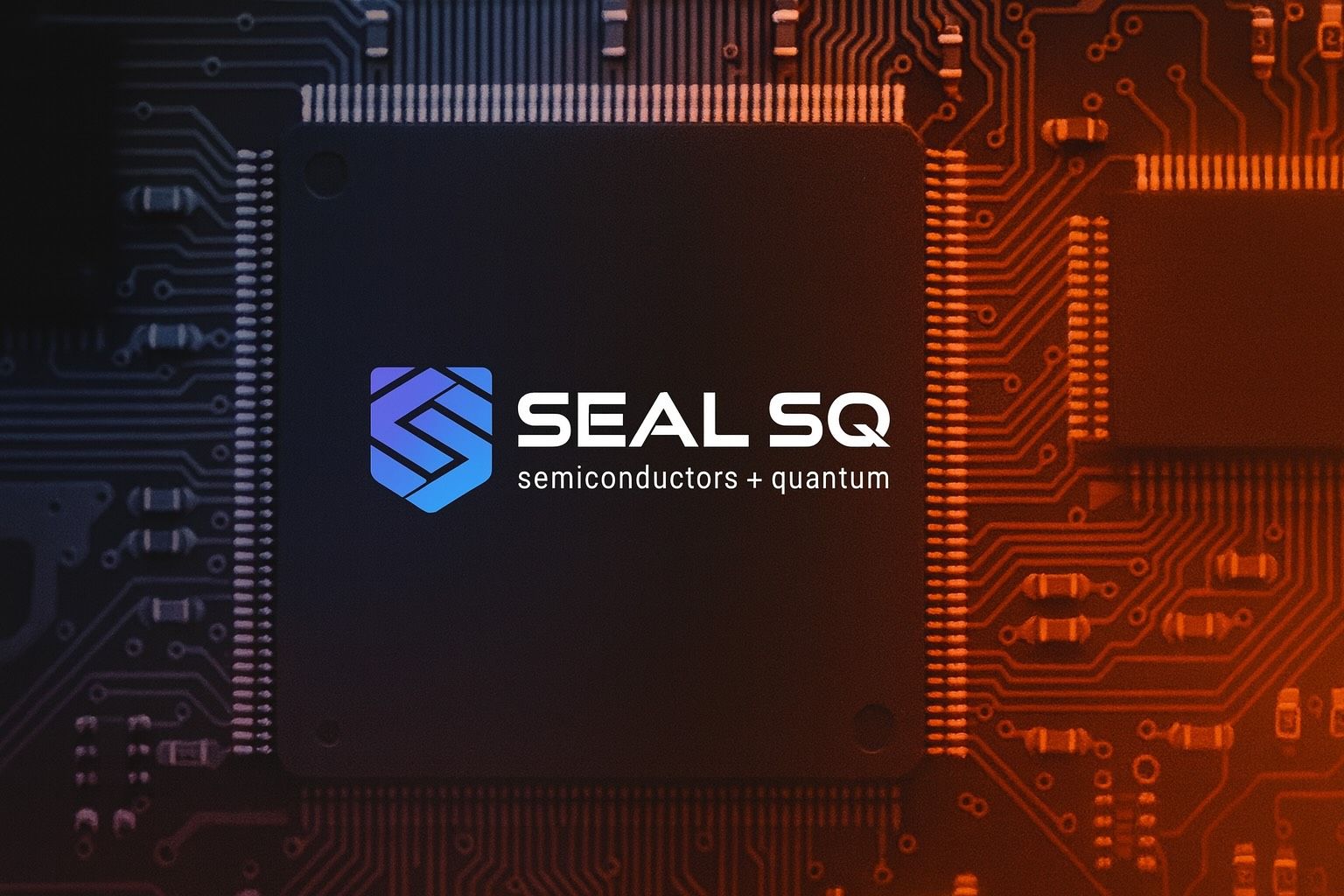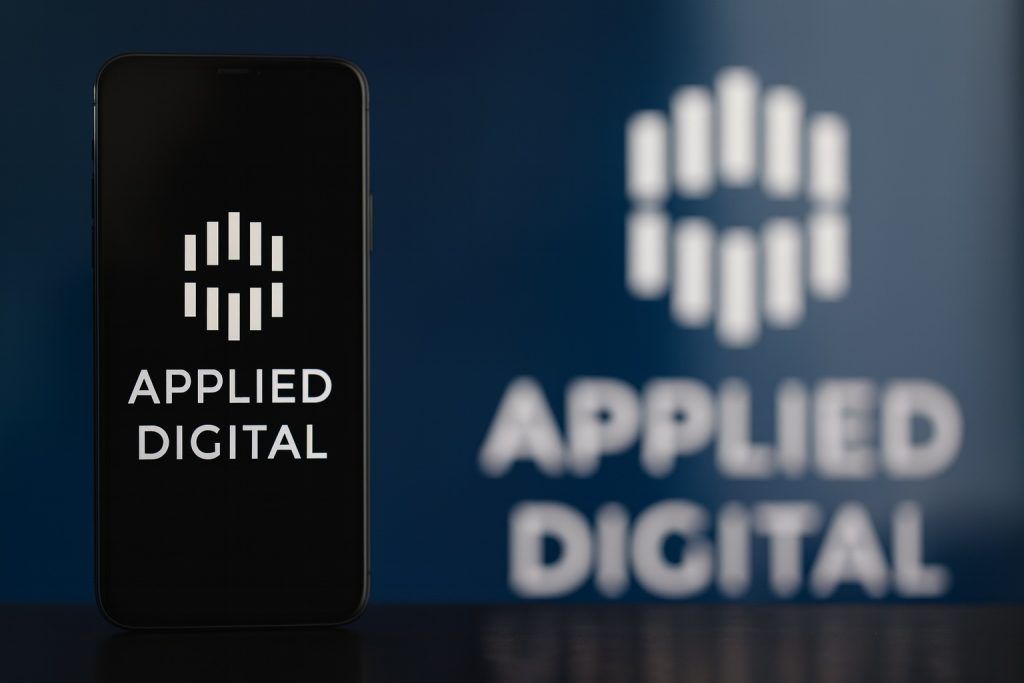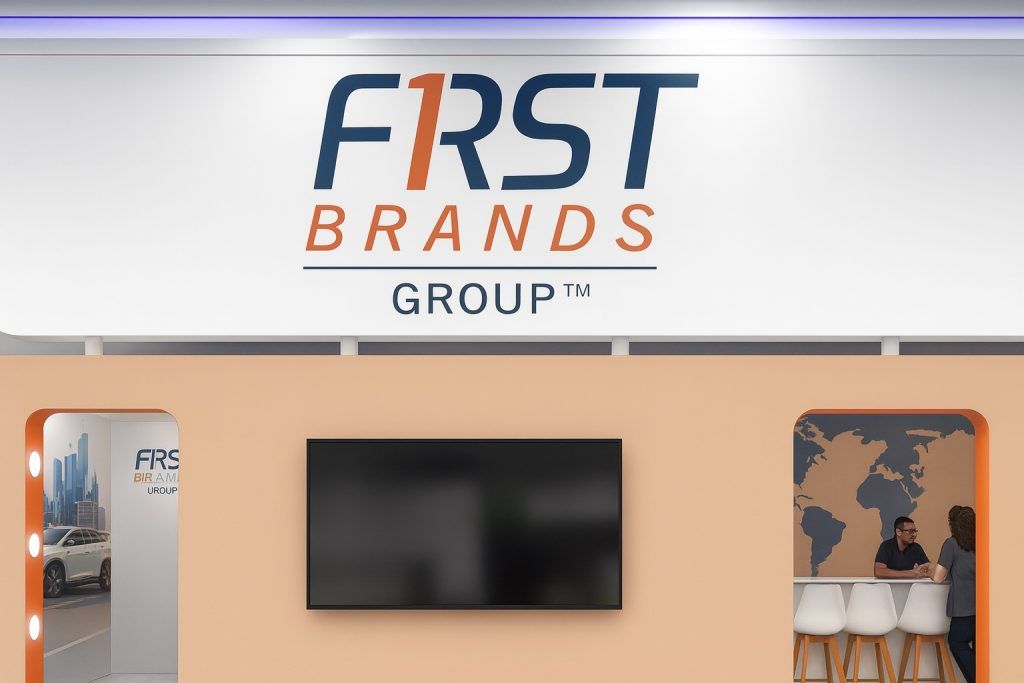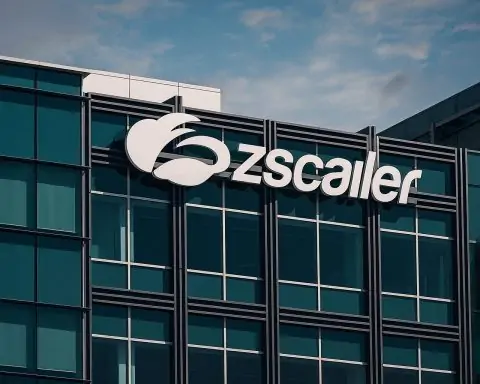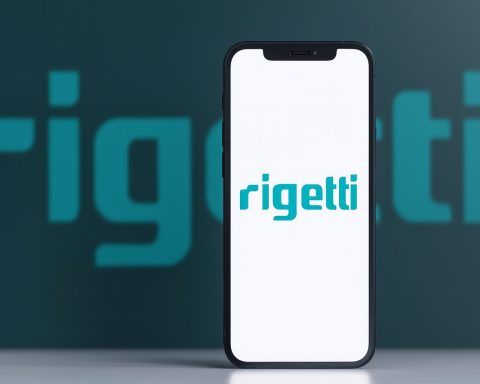- Surging Stock on Quantum Hype: SEALSQ shares have spiked dramatically in recent days – up 27% over a four-day rally through October 4th [1] – reaching their highest levels of the year amid renewed investor optimism in post-quantum cybersecurity [2]. The company’s market capitalization now tops $600+ millionafter a series of upbeat announcements [3] [4].
- Strategic Alliances Worldwide: The company is forging key partnerships across three continents. Recent deals with SEALCOIN AG (Switzerland), Kaynes Technology (India), and Ajyal Holding (UAE) aim to integrate quantum-proof cryptography into AI systems and establish secure semiconductor hubs in each region [5]. Earlier this year, SEALSQ even took a 28.3% stake in Wecan Group to embed post-quantum security in IoT chips, “fortifying billions of IoT devices against future quantum” threats [6] [7].
- Quantum-Resistant Chip Launch: SEALSQ is rolling out cutting-edge products to stay ahead of the quantum curve. It unveiled the Quantum Shield QS7001 – the world’s first chip with NIST-standardized quantum-resistant algorithms – positioning the firm to secure critical infrastructure like cryptocurrency and defense systems [8]. The company is also developing post-quantum Trusted Platform Modules (TPMs) to meet upcoming U.S. government mandates for quantum-safe hardware by 2027 [9].
- Bold Tech in Space: In a futuristic twist, SEALSQ is preparing to launch a post-quantum secure satellite next month as part of WISeSat’s constellation. The November 2025 launch will carry SEALSQ’s PQC chips to enable quantum-resilient blockchain transactions from orbit [10] [11]. “SEALSQ is redefining the future of secure space transactions,” said CEO Carlos Moreira, highlighting a vision that combines post-quantum cryptography, blockchain trust and decentralized exchanges in space [12]. This is the first of five PQC-enhanced satellites planned by 2026, underscoring the company’s ambition to secure the $159 billion satellite communications market against next-gen threats [13].
- Explosive Growth & Cash Infusion: Financially, SEALSQ is in high-growth mode. Preliminary results show $9.9 million revenue for the first 9 months of 2025 – up 41% year-on-year – with Q3 alone ($5.1M) surpassing the entire first half [14]. The firm reaffirmed full-year 2025 guidance of $17.5–$20M revenue (a 59–82% jump vs 2024) [15] [16]. To fuel its plans, SEALSQ just raised $69 million in fresh capital via warrant exercises at $4.60/share [17] [18], boosting its cash war chest to a hefty $220 million as of October [19]. This liquidity provides “robust PQC innovation funding” and runway for global expansion [20].
- Global Expansion Strategy: SEALSQ is rapidly expanding its geographic footprint to localize production and tap new markets. It’s collaborating with Spain’s Quantix Edge to build the country’s first post-quantum chip personalization center in Murcia, a project expected to generate $25 million revenue and a €793M regional economic impact [21] [22]. In Asia, SEALSQ signed an MoU with Seoul’s Metropolitan Government to set up a post-quantum semiconductor R&D center in South Korea [23], and launched a joint venture in India for onshore chip personalization [24]. In the Middle East, its Abu Dhabi JV “Kuaentum” with Ajyal is backed by a $100M investment to create a post-quantum tech hub [25]. These moves aim to bolster regional supply chain resilience and position SEALSQ as a go-to provider of sovereign, quantum-secure semiconductors across Europe, Asia and MENA.
- Market Position & Vision: Spun out of Swiss firm WISeKey, SEALSQ is carving a unique niche at the intersection of semiconductors and cybersecurity. It focuses on quantum-resistant cryptography and secure IoT hardware, seeking first-mover advantage as governments and enterprises brace for the quantum computing era. Notably, the U.S. government’s upcoming requirements for post-quantum encryption (with a 2027 deadline) are expected to stoke demand for solutions like SEALSQ’s next-gen chips [26]. Industry forecasts reinforce the opportunity – experts predict the quantum technology sector will explode from ~$4 billion in 2024 to as much as $72 billion by 2035 [27], which implies a huge future market for quantum-safe devices. SEALSQ’s CEO Carlos Moreira has been evangelizing this vision globally, from delivering the opening keynote at New York’s Quantum+AI summit to joining panels on AI and quantum computing at the Horasis Global Forum in Brazil [28] [29].
- Analyst Commentary & Stock Outlook: Despite the buzz, experts urge caution alongside the hype. Simply Wall St notes that while SEALSQ’s push into post-quantum security is exciting and could “put [it] at the heart” of a critical new sector, it also raises expectations for flawless execution in the face of volatile shares and ongoing losses [30]. The company remains unprofitable, and rapid expansion plus R&D mean high cash burn – with the risk of dilution (indeed, share count just jumped with the warrant deal). TipRanks’ AI analyst concurs, rating LAES stock “Neutral”, as strong technical momentum and optimistic growth projections are tempered by “financial performance challenges and valuation concerns” [31]. Current valuation may already reflect a lot of future success; one analyst covering SEALSQ recently maintained a Hold rating with a $4.50 price target [32] (around the stock’s current mid-$4 range), suggesting limited near-term upside. That said, some bullish forecasts see the stock heading toward $6+ in the next year [33] if the company hits its milestones. Long-term, if SEALSQ can deliver on its ambitious roadmap – doubling revenues again in 2026 and tapping a $175 million pipeline of opportunities [34] – significant upside could emerge. Investors remain sharply divided on its future value, reflecting both the enormous promise and the uncertainty inherent in an early-stage quantum-tech play [35].
Detailed Analysis
Rally Fueled by Post-Quantum Breakthroughs
SEALSQ Corp’s stock (NASDAQ: LAES) has been on a tear in early October 2025, coinciding with major post-quantum technology announcements. The share price climbed for four sessions straight, culminating in a +7.7% jump on Oct 4alone and a 27% cumulative gain over that week [36]. This surge propelled LAES to its highest levels since its listing, with the market cap swelling past half a billion dollars [37]. For context, in mid-September the company was valued around $493 million [38], and by October 8 its market cap had crossed $630 million [39] – a reflection of the exuberance around SEALSQ’s recent milestones. Trading volumes have spiked as well (averaging ~12.6 million shares) [40], indicating heightened investor interest. Technical charts show bullish momentum after the stock broke out on these news catalysts, and TipRanks even flags a “Buy” technical signal on LAES [41]. However, observers note the ride has been volatile; SEALSQ only began trading publicly in 2023, and its share price has swung sharply on news flow and speculative sentiment. The recent rally appears to price in a lot of optimism – making it critical for the company to follow through on its promises to justify the gains.
Latest News: Quantum Chip Debut and AI Security Tie-Up
Driving the recent spike were back-to-back announcements that SEALSQ is pushing the envelope in post-quantum hardware. On October 2, the company revealed it will officially launch its Quantum Shield “QS7001” chip in November 2025 at a prominent industry event [42]. This next-generation semiconductor is significant: QS7001 embeds NIST-standardized quantum-resistant algorithms at the hardware level [43], making it one of the first commercially available chips designed to withstand quantum computer attacks. Such capabilities could be game-changing for safeguarding everything from banking systems to military drones once quantum computers become powerful enough to crack today’s encryption. Alongside the chip launch, SEALSQ announced a partnership with its sister firm SEALCOIN AG to infuse post-quantum security into AI platforms [44]. This collaboration will create “quantum-resistant security infrastructure for AI agents,” targeting high-stakes uses in IoT, healthcare, finance and defense [45]. In other words, SEALSQ is ensuring that as artificial intelligence is deployed in critical applications, the underlying devices and communications have built-in immunity to future quantum hacks. These twin announcements – the flagship chip launch and the AI security partnership – have reshaped SEALSQ’s investment narrative virtually overnight. They position the company at the forefront of the “post-quantum security” race, which has become a hot theme as government regulators and industries realize the urgency of upgrading crypto systems before quantum decryption becomes viable. Short-term, these developments served as a potent catalyst for the stock, signaling to the market that SEALSQ is emerging as a serious innovator in a field poised for enormous growth.
Notably, SEALSQ’s CEO Carlos Moreira is taking a very public role in promoting these advances. He is slated to deliver the opening keynote at the IQT Quantum+AI Summit in New York on Oct 20, where QS7001’s debut will take center stage [46]. Just a week earlier, Moreira was announced as a panelist at the 10th Horasis Global Summit in São Paulo, Brazil, discussing the convergence of AI and quantum computing [47]. The company is even considering establishing a post-quantum semiconductor personalization center in Brazil to cater to Latin American demand [48]. This high-profile thought leadership coincides with SEALSQ’s technological milestones and helps bolster the company’s credibility as a leader in the space of quantum-safe tech. In essence, SEALSQ is not only making headlines with new products – it’s ensuring those headlines are heard by investors, policymakers, and potential customers worldwide.
Strategic Partnerships Spanning Globe
Underpinning SEALSQ’s post-quantum ambitions is an aggressive partnership strategy that reaches across Europe, Asia, and the Middle East. These alliances are helping the relatively small company punch above its weight by leveraging local expertise, funding, and market access:
- Europe (Spain & Switzerland): In late September, SEALSQ signed a definitive deal with Quantix Edge Securityto build Spain’s first post-quantum semiconductor personalization center [49]. Located in the Murcia region, this center is expected to generate $25 million in revenue over three years [50] while boosting Spain’s tech sovereignty. The initiative will accelerate commercialization of SEALSQ’s chips in Europe and contribute to an estimated €793 million economic impact locally [51]. It also supports SEALSQ’s robust $170+ million sales pipeline, indicating significant demand ahead [52]. Earlier, in June, SEALSQ expanded in Switzerland (its home base) by taking a 28.3% stake in Wecan Group, a blockchain platform company. This investment aims to marry Wecan’s distributed ledger tech with SEALSQ’s quantum-resistant semiconductors, embedding unbreakable cryptography into IoT devices – an alliance envisioned to “fortify billions of IoT devices against future quantum threats” [53]. This move underscores SEALSQ’s commitment to secure IoT connectivity, a rapidly growing need as billions of smart devices come online.
- Asia (India & South Korea): SEALSQ is also planting flags in Asia’s burgeoning semiconductor landscape. On Sept 29, 2025, it announced a joint venture with Kaynes Technology (Kaynes SemiCon) to establish India’s first secure semiconductor personalization center [54]. This onshore facility will allow sensitive chip programming (e.g. embedding cryptographic keys) to be done within India’s borders, addressing data sovereignty and security concerns for Indian customers. It leverages Kaynes’ local manufacturing foothold and SEALSQ’s post-quantum chip tech – aligning with India’s push for semiconductor self-reliance. Meanwhile, on Sept 22, SEALSQ inked an MoU with the Seoul Metropolitan Government in South Korea to create a post-quantum semiconductor R&D and design center in Seoul [55]. Seoul is keen to nurture its semiconductor ecosystem (especially around open-source RISC-V chips), and SEALSQ’s center will focus on customizing post-quantum secure chips for Asian markets. These Asian partnerships give SEALSQ a direct presence in two tech-savvy, high-growth markets, and they tap regional support (government and industry) to help scale SEALSQ’s innovations faster than it could alone.
- Middle East (UAE): Over the summer, SEALSQ turned to the Middle East’s deep-pocketed investors to help finance its quantum quest. In August 2025 it launched “KUAENTUM,” a joint venture in Abu Dhabi with Ajyal Holding, targeting a $100 million local investment [56]. The goal is to build a post-quantum semiconductor hub in the UAE – including potentially a satellite production facility – in line with the country’s ambitions to be a regional tech leader [57]. The UAE JV not only injects capital, it positions SEALSQ within a government-backed innovation ecosystem (Abu Dhabi’s) that could open doors to defense and aerospace contracts in the Gulf region. SEALSQ also recently expanded its WISeSat.Space satellite partnership (WISeSat is affiliated with its parent WISeKey) to the Middle East, integrating post-quantum security into satellite IoT networks [58]. This ties in directly with the upcoming satellite launch carrying SEALSQ’s secure hardware. By establishing roots in the UAE, SEALSQ is aligning with a geography that is heavily investing in space and cybersecurity ventures.
Collectively, these partnerships reflect a deliberate strategy: embed SEALSQ’s quantum-safe technology globally before the quantum threat truly arrives. By teaming with regional players and governments now, SEALSQ hopes to set de-facto standards and capture early market share in quantum-secure chips, rather than trying to play catch-up later against larger competitors. It’s essentially laying a worldwide foundation – from Murcia to Mumbai to the Middle East – for the post-quantum future.
Product Innovation: From Chips to Satellites
SEALSQ’s appeal to investors stems from its pipeline of innovative products that address looming cybersecurity challenges. At the heart of its portfolio is the forthcoming Quantum Shield QS7001 chip. Slated to launch in November 2025, QS7001 is billed as the first security chip to implement NIST-approved post-quantum cryptography algorithms [59]. This means it can encrypt and decrypt data in a way that even a quantum computer (with potentially exponential cracking power) cannot easily break. Importantly, QS7001 is an “open platform” chip [60]– likely allowing developers to integrate it into various devices and update its cryptographic functions as standards evolve. SEALSQ has indicated the chip will be targeted at critical infrastructure use cases, such as safeguarding cryptocurrency assets, securing government communications, and protecting military/aerospace systems [61]. In fact, one early pilot project involves AuthenTrend building a proof-of-concept quantum-proof, fingerprint-enabled security key using QS7001 [62] – pointing to applications in hardware authenticators and FIDO keys that could remain secure even in a post-quantum world.
Another prong of SEALSQ’s product development is its work on post-quantum Trusted Platform Modules. TPMs are chips that provide hardware-based security (like storing encryption keys and performing secure boot) in PCs, servers, and IoT devices. SEALSQ is upgrading TPM designs with quantum-resistant algorithms, anticipating regulations (like the US National Quantum-Resilience Act) that will require government suppliers to use quantum-safe hardware by 2027 [63]. In a Sept 4 update, SEALSQ said it is accelerating its next-gen TPMs ahead of that deadline [64], which suggests it aims to have certified post-quantum TPM chips ready for the market as agencies and companies scramble to comply in the next 1–2 years. This could be a lucrative niche, as virtually every enterprise that uses TPMs today (for example, in laptops or industrial controllers) may need to upgrade those modules for quantum safety by the late 2020s.
SEALSQ’s innovation isn’t confined to Earth either – it extends to orbit. Through its partnership with WISeSat (a satellite IoT initiative of WISeKey), SEALSQ has developed space-hardened cryptographic chips that will go into Low Earth Orbit satellites. The upcoming WISeSat 3.0 satellite launch (expected November 2025) will carry SEALSQ’s tech to demonstrate “quantum-resilient transaction capabilities in orbit” [65] [66]. In practice, this means a satellite can perform encrypted communications or blockchain transactions that are secured against future quantum hacking. The satellite will use decentralized trust management (via SEALCOIN’s blockchain) and quantum-resistant encryption to enable secure machine-to-machine dealings from space (imagine satellites exchanging data or even digital assets securely) [67]. Moreira, the CEO, described this as “laying the foundation for a trusted, decentralized space economy” [68]. It sounds lofty, but the concept has concrete drivers: as satellite constellations handle more sensitive data (for navigation, banking, military, etc.), ensuring those signals and transactions can’t be spoofed or cracked by adversaries is critical. SEALSQ plans to help launch five such PQC-enhanced satellites by end of 2026 [69], essentially integrating its chips into an orbital cybersecurity network. If successful, this could open an entirely new vertical for the company in the space tech arena, tapping into the ~$90 billion satellite communications market (projected $160B+ by 2030) [70].
From ultra-secure chips and TPMs to quantum-safe satellites, SEALSQ’s R&D pipeline is clearly focused on one theme: staying ahead of the quantum threat. While quantum computers powerful enough to break current encryption are still some years away, SEALSQ is betting that organizations will pay now for future-proof security – a bet that appears increasingly justified as government directives and rising cyberattacks push companies to upgrade their defenses proactively.
Financial Performance: High Growth, High Spend
In tandem with its technological strides, SEALSQ’s financials indicate a company transitioning from a legacy business into a high-growth, R&D-heavy venture. According to the preliminary Q3 2025 update, revenue for the first nine months of 2025 reached $9.9 million, up 41% from $7.0M in the same period a year prior [71]. Notably, Q3 alone contributed $5.1M – which not only was the strongest quarter of the year but exceeded the entire H1 2025 revenue(approx $4.8M) [72]. This inflection hints that SEALSQ’s sales may be accelerating as its new products and contracts begin to kick in. Management affirmed its full-year 2025 guidance of $17.5–$20.0 million in revenue [73], which implies a very robust Q4 expectation of ~$7.6–$10.1M [74]. Hitting the top end would mean Q4 alone nearly doubles Q3 – an ambitious target, but possibly attainable if large deals (like initial Quantix project revenues or back-loaded IoT chip orders) materialize.
Even at $17–20M annual revenue, SEALSQ remains a small-cap company, and it is not yet profitable. The firm posted a net loss of $0.17 per share for H1 2025 [75], and likely continued to operate in the red in Q3 given ongoing heavy investments. Gross margins and operating expenses weren’t detailed in the preliminary update, but given the “strategic transition” mentioned (shifting from older products to new PQC products) [76], margins might be under pressure until the new offerings scale up. The bright spot is that SEALSQ’s balance sheet has been dramatically fortified in recent months. As of early October, the company reports $220 million in cash on hand [77] – a massive sum relative to its revenue. This war chest was boosted by a $69.0 million warrant exercise deal completed on Oct 6, in which SEALSQ convinced institutional holders of 15 million warrants to exercise them early at $4.60/share [78] [79]. In exchange, those investors received new long-dated warrants (at $5.10 strike) as an incentive [80]. Essentially, SEALSQ tapped the market’s enthusiasm to raise quick cash now, even if it meant some dilution and potentially more shares down the road. The strategy makes sense: the company’s liquidity is now very strong, which is crucial for funding R&D, chip production, and global expansion without worrying about short-term financing needs. In fact, Investing.com data shows SEALSQ’s current ratio (a measure of liquidity) at a high 7.38, reflecting a very solid ability to cover liabilities [81].
SEALSQ’s management is deploying this capital towards growth initiatives and acquisitions that can turbocharge its roadmap. A prime example is the acquisition of IC’ALPS, a French fabless semiconductor design firm, which was completed in August 2025 [82]. IC’ALPS brings ~90 engineers and expertise in chip design (they were an Intel partner), instantly expanding SEALSQ’s development capacity [83]. Two months of IC’ALPS revenue contributed to Q3 results [84], and full consolidation in 2026 is expected to add significantly to top-line growth [85]. Moreover, SEALSQ cites the IC’ALPS deal and the Quantix project in Spain as key drivers behind an anticipated 50%–100% revenue growth in 2026 [86]. The company’s business pipeline has swelled to $175 million in potential opportunities through 2028 [87] (up from $170M previously noted [88]), showcasing the demand they are seeing for quantum-safe tech and custom chip design services. If even a portion of that pipeline converts, SEALSQ could be looking at multi-year double-digit growth rates.
However, the flip side of this aggressive scaling is that expenses are also rising fast. R&D spending is likely substantial (quantum-resistant hardware development is not cheap), and establishing new centers or joint ventures in multiple countries requires upfront investment. The company’s guidance and comments imply that profitability is not on the immediate horizon – they are prioritizing market penetration and technology leadership over near-term earnings. This is a classic high-growth strategy, but it comes with execution risks. SEALSQ must manage its cash burn carefully (even $220M can deplete in a few years if not carefully allocated) and eventually prove that its investments lead to sustainable, high-margin revenue streams. For now, though, the focus is on revenue growth and strategic milestones, which the market appears to be rewarding.
Future Outlook: Promise and Perils
Looking ahead, SEALSQ’s trajectory will depend on its ability to capitalize on the early lead it’s staking out in post-quantum security. In the short term (next 6–12 months), several catalysts could influence the stock: the successful launch and reception of the QS7001 chip, any pilot customer wins or contracts for its quantum-resistant chips, the November satellite mission outcome, and follow-through on revenue guidance in the Q4 and full-year earnings reports. If SEALSQ meets or beats its targets and continues to announce high-profile partnerships (or perhaps government grants/contracts, given the national security angle of its tech), investor confidence could stay high. Some analysts have begun paying attention – at least one Wall Street analyst has issued a $6.00 12-month price target and a bullish stance on the stock [89], suggesting upside if execution goes well. On technical grounds, the stock could also see traders piling in on any quantum computing news or hype cycles (as was the case with other quantum-exposed stocks this year). Volatility will likely remain elevated; rapid gains could be followed by sharp pullbacks as early investors take profits or if broader market sentiment shifts away from speculative tech.
In the long term (2–5 years), SEALSQ aspires to be a key enabler of the post-quantum cryptography era. By around 2030, many experts believe quantum computers could mature enough to necessitate widespread cryptographic changes [90] [91]. SEALSQ’s timing to scale up by 2026–2028 could position it to ride that wave. The company’s own outlook of potentially doubling revenue again in 2026 and sustaining high growth implies it could reach on the order of ~$30–40M revenue in 2026 and ~$60M+ by 2027 if 50%+ annual growth persists. Achieving that would likely require not just organic sales but possibly more acquisitions or expansion into new verticals. The addressable market is enormous: virtually every device that connects to the internet will eventually need quantum-safe encryption, from smartphones and smart meters to ATMs and satellites. SEALSQ, with its broad product line (secure elements, TPMs, custom ASICs, and cloud provisioning services), is targeting a wide swath of that market. It will, however, face growing competition. Established semiconductor players (like NXP, Infineon, Microchip) and cybersecurity firms are undoubtedly developing their own post-quantum solutions, and government-backed initiatives might favor larger defense contractors for certain contracts. SEALSQ’s challenge will be to maintain its innovative edge and ideally form strategic partnerships with some big industry players to avoid being sidelined.
Investor opinion on SEALSQ’s long-term fate remains highly polarized. The Simply Wall St community, for example, shows fair value estimates for LAES ranging from virtually $0 to $100+ per share [92] – a jaw-dropping spread that highlights the uncertainty. The optimistic scenario is that SEALSQ becomes a dominant vendor of quantum-security chips – essentially a “picks and shovels” provider for the quantum age – which could make the current ~$5 stock price look like a bargain. In a pessimistic scenario, the company might struggle to monetize its tech before others catch up, or dilutes shareholders heavily to fund operations, eroding value.
At present, analysts and rating services lean cautiously optimistic but guarded. TipRanks reports the consensus rating as Neutral/Hold, with a modest price target in the mid-$4s [93]. The TipRanks “Spark” model highlights strong points like SEALSQ’s “positive earnings call outlook” (management’s confident guidance) and stock momentum, but offsets them with weak fundamentals – noting “valuation remains weak due to unprofitability” and that even though guidance is bright, “immediate financial challenges and delayed revenue” from new products temper the picture [94]. In other words, execution is key from here. The company must turn its prototypes and MOUs into real sales growth and eventually profits to truly earn a re-rating upwards.
For investors, SEALSQ represents a high-risk/high-reward proposition. It sits at the crossroads of two of the most consequential tech trends of this decade: the rise of quantum computing and the imperative to secure an increasingly digital, connected world. The next few quarters will be critical in proving whether SEALSQ can convert its bold initiatives – the “quantum leap” it’s attempting – into sustainable commercial success. If it can, SEALSQ could help define the future of digital security (and handsomely reward believers); if not, the current rally may prove as fleeting as a subatomic particle in a quantum state.
Sources: SEALSQ/GlobeNewswire press releases [95] [96], Investing.com [97] [98], Tech Space 2.0 (ts2.tech) [99] [100], AInvest News [101] [102], Simply Wall St [103], TipRanks [104] [105].
References
1. www.ainvest.com, 2. www.ainvest.com, 3. www.investing.com, 4. www.tipranks.com, 5. www.ainvest.com, 6. ts2.tech, 7. ts2.tech, 8. www.ainvest.com, 9. www.ainvest.com, 10. www.investing.com, 11. www.investing.com, 12. www.investing.com, 13. www.investing.com, 14. www.sealsq.com, 15. www.sealsq.com, 16. www.sealsq.com, 17. www.sealsq.com, 18. www.sealsq.com, 19. www.sealsq.com, 20. www.sealsq.com, 21. www.tipranks.com, 22. www.tipranks.com, 23. www.sealsq.com, 24. www.sealsq.com, 25. www.ainvest.com, 26. www.ainvest.com, 27. ts2.tech, 28. simplywall.st, 29. www.ainvest.com, 30. simplywall.st, 31. www.tipranks.com, 32. www.tipranks.com, 33. tickernerd.com, 34. www.sealsq.com, 35. simplywall.st, 36. www.ainvest.com, 37. www.investing.com, 38. www.investing.com, 39. www.tipranks.com, 40. www.tipranks.com, 41. www.tipranks.com, 42. simplywall.st, 43. simplywall.st, 44. simplywall.st, 45. simplywall.st, 46. simplywall.st, 47. www.ainvest.com, 48. www.ainvest.com, 49. www.tipranks.com, 50. www.tipranks.com, 51. www.tipranks.com, 52. www.tipranks.com, 53. ts2.tech, 54. www.sealsq.com, 55. www.sealsq.com, 56. www.ainvest.com, 57. www.ainvest.com, 58. www.investing.com, 59. www.ainvest.com, 60. www.sealsq.com, 61. www.ainvest.com, 62. www.sealsq.com, 63. www.ainvest.com, 64. www.sealsq.com, 65. www.investing.com, 66. www.investing.com, 67. www.investing.com, 68. www.investing.com, 69. www.investing.com, 70. www.investing.com, 71. www.sealsq.com, 72. www.sealsq.com, 73. www.sealsq.com, 74. www.sealsq.com, 75. www.ainvest.com, 76. www.sealsq.com, 77. www.sealsq.com, 78. www.sealsq.com, 79. www.sealsq.com, 80. www.sealsq.com, 81. www.investing.com, 82. www.sealsq.com, 83. finance.yahoo.com, 84. www.sealsq.com, 85. www.sealsq.com, 86. www.sealsq.com, 87. www.sealsq.com, 88. www.ainvest.com, 89. tickernerd.com, 90. ts2.tech, 91. ts2.tech, 92. simplywall.st, 93. www.tipranks.com, 94. www.tipranks.com, 95. www.sealsq.com, 96. www.sealsq.com, 97. www.investing.com, 98. www.investing.com, 99. ts2.tech, 100. ts2.tech, 101. www.ainvest.com, 102. www.ainvest.com, 103. simplywall.st, 104. www.tipranks.com, 105. www.tipranks.com
